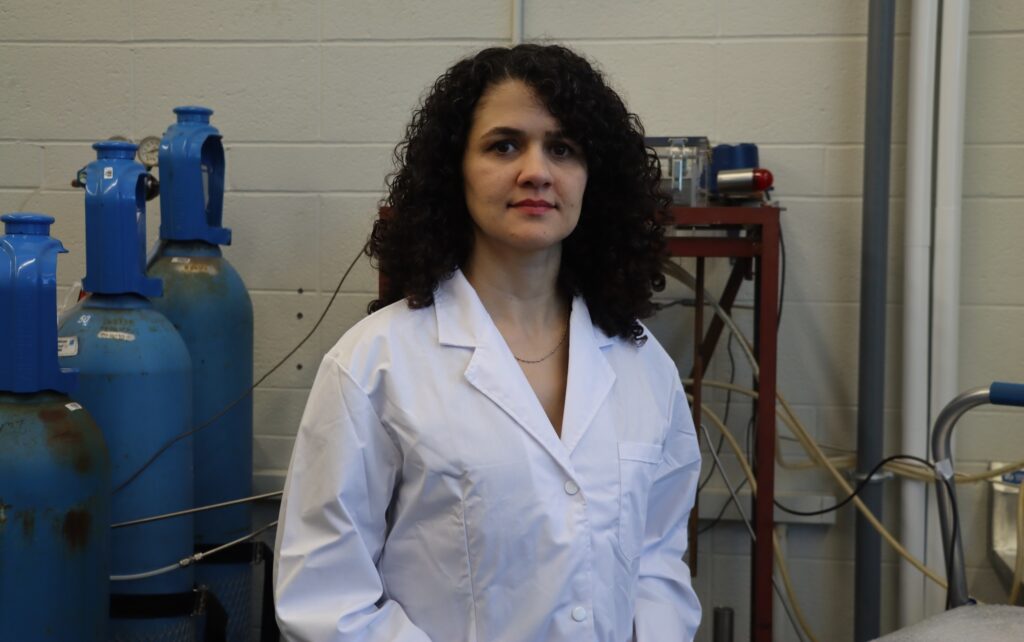
Steel is one of the most essential materials in modern society, integral to both everyday use and industrial applications. Its role in our lives is undeniable, but the environmental impact of its production is a significant concern.
Associate Professor Leili Tafaghodi, from the Department of Materials Science and Engineering at McMaster University, is at the forefront of making steel production more sustainable. Her research focuses on innovative methods that maximize resource utilization while minimizing waste and energy consumption.
“Steel is a cornerstone of manufacturing, and rather than seeking to replace it due to its significant CO₂ emissions, we should focus on developing more sustainable production methods,” she explains.
Traditional steelmaking methods
Steelmaking is one of the largest contributors to global greenhouse gas emissions, says Tafaghodi. As the demand for steel continues to rise, the environmental impact of the industry becomes increasingly harmful.
Traditional steelmaking starts with extracting iron from iron ore, a raw material primarily composed of iron oxides. The iron ore is processed in blast furnaces, where carbon, typically in the form of coke, acts as a reducing agent to produce molten iron. Steelmaking involves refining this molten iron to remove impurities and transforming it into high-quality steel.

“As a result of relying on carbon and coke in high-temperature processes, steelmaking generates significant CO₂ emissions, a major contributor to global warming,” says Tafaghodi. “It is imperative that the iron and steelmaking sector undergoes a transformation, and that’s where my team and I come in.”
A new frontier: Hydrogen-based steelmaking
To address the environmental threats posed by traditional steelmaking, Tafaghodi is using hydrogen instead of carbon to produce iron. Hydrogen presents a promising medium- to long-term solution for significantly reducing CO₂ emissions in steel production.
Currently, carbon serves as both an energy source and a reducing agent in steelmaking, leading to substantial CO₂ emissions. By using hydrogen, the reduction process would produce water (H₂O) instead of CO₂, significantly cutting emissions and helping to mitigate climate change.
In Tafaghodi’s lab, students are designing and building a thermogravimetric setup to conduct high-temperature experiments for hydrogen-based reduction of iron ores.
“Studying iron ore reduction with hydrogen is crucial for making the iron and steel industry more sustainable,” says Ali Zakeri, a third-year PhD candidate in Materials Science and Engineering. “This sector accounts for nearly one-third of all industrial CO₂ emissions. Hydrogen-based ironmaking offers a promising opportunity to reduce fossil fuel dependence and improve the environmental sustainability of the steel industry.”

Muhammad Nabeel, a research associate in Tafaghodi’s lab, highlights the invaluable mentorship and hands-on experience he has gained. “Leili’s mentorship has greatly enhanced my technical skills and deepened my understanding of our work’s environmental impact. Our research is vital for developing sustainable steelmaking processes to reduce industrial carbon emissions and combat climate change. I am proud to be part of a team making significant strides towards a greener future.”

Collaborating for a sustainable future
Tafaghodi has partnered with global steel producers in Hamilton and the United States to advance this research into real-world applications.
“The best way to test the feasibility of our research is to implement it in the environments where it will be used,” she says. “We are hopeful that the work being done in this lab will revolutionize steelmaking, contributing to a more sustainable and impactful future.”
